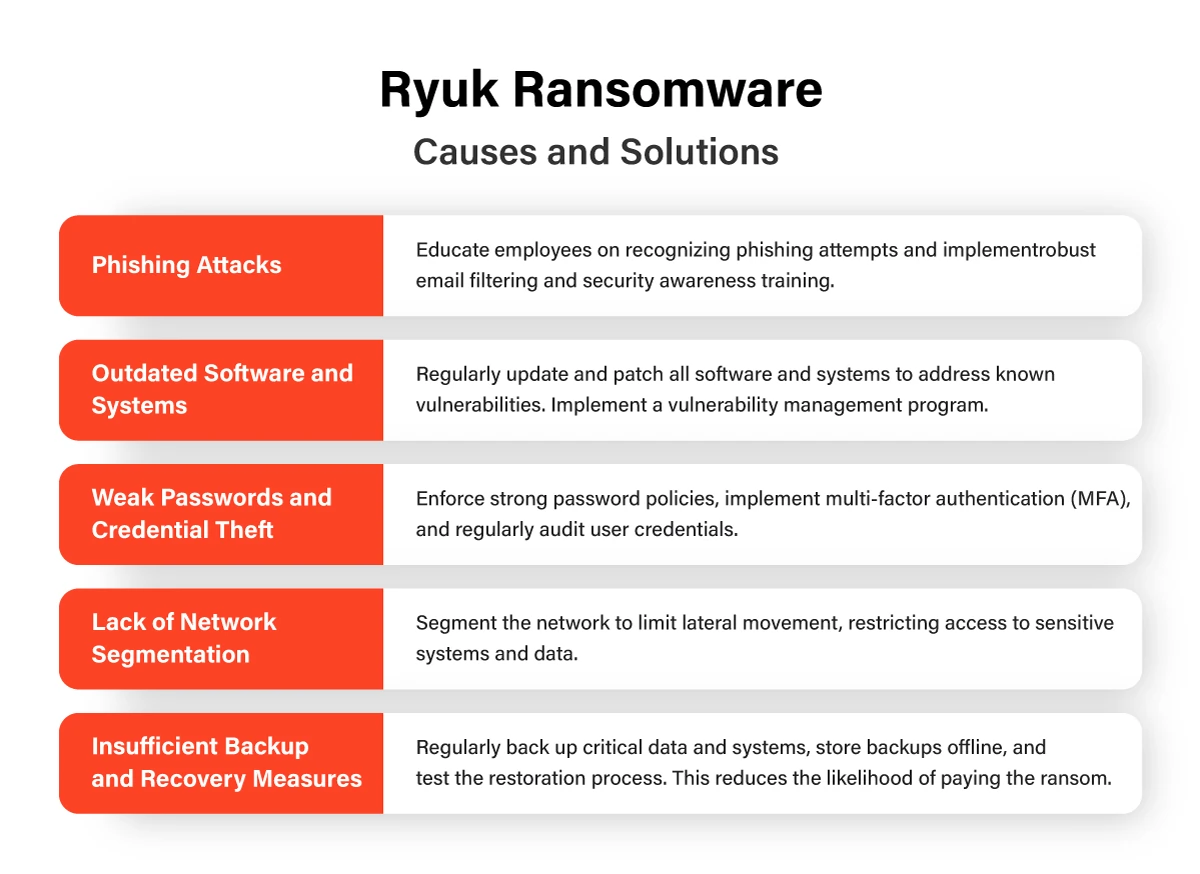In June 2019, the cybersecurity world witnessed the emergence of a new and dangerous threat: Ryuk ransomware. This sophisticated malware has since become a notorious player in the realm of cyberattacks, primarily targeting large organizations and causing significant financial losses. In this blog post, we’ll delve into the world of Ryuk ransomware, exploring its origins, modus operandi, and crucial steps you can take to prevent falling victim to this menacing threat.
Understanding Ryuk Ransomware
Ryuk is a type of ransomware designed to encrypt files on an infected system, rendering them inaccessible to the user. Once encrypted, victims are presented with ransom notes that demand substantial ransom payments in exchange for a private key required to decrypt the files. Ryuk ransomware is believed to be operated by a threat actor group known as Wizard Spider, which is also responsible for the infamous Hermes ransomware.

The Disturbing Trend of Big Game Hunting
Ryuk ransomware attacks are a prime example of what cybersecurity experts refer to as “big game hunting.” Rather than indiscriminately targeting individuals or small businesses, these attacks focus on large organizations with the financial capacity to pay substantial ransoms. The threat actors behind Ryuk carefully select their targets, often gaining access through phishing campaigns involving malicious spam emails.
Modus Operandi of Ryuk Ransomware
- Infection: Ryuk infects systems through carefully crafted phishing emails that may appear legitimate. Unsuspecting employees inadvertently download malicious attachments or click on malicious links, allowing the malware to enter the network.
- Encryption: Once inside, Ryuk proceeds to encrypt critical files and system data. It often targets system files and shadow copies, making data recovery without the decryption key nearly impossible.
- Ransom Demands: After successfully encrypting files, Ryuk presents a ransom note demanding a significant payment in cryptocurrency, typically Bitcoin, in exchange for the decryption key. The ransom payments can range from thousands to millions of dollars.
Preventing Ryuk Ransomware Attacks
The best defense against Ryuk ransomware attacks is a proactive approach to cybersecurity. Here are some essential steps you can take to protect your organization:
Multi-Factor Authentication (MFA)
Implement MFA across your network to add an extra layer of security. This can help prevent unauthorized access, even if an attacker manages to obtain login credentials.
Employee Training
Conduct regular cybersecurity awareness training for your employees to help them recognize and avoid phishing emails and suspicious attachments.
Email Filtering
Employ robust email filtering solutions that can identify and quarantine malicious emails before they reach employees’ inboxes.
Backup and Recovery
Maintain up-to-date backups of critical data, both onsite and offsite. Regularly test your backup and recovery procedures to ensure they are effective.
Patch Management
Keep your software and systems updated with the latest security patches to mitigate vulnerabilities that attackers may exploit.
Network Segmentation
Segment your network to limit lateral movement in case of a breach, making it harder for Ryuk to propagate through your systems.
Ryuk ransomware is a significant cybersecurity threat that continues to evolve and target large organizations. By understanding its modus operandi and implementing proactive security measures such as multi-factor authentication, employee training, and robust backup systems, you can significantly reduce the risk of falling victim to a Ryuk ransomware attack. Stay vigilant and invest in cybersecurity to protect your organization’s valuable data and resources from the clutches of threat actors like Wizard Spider.
Frequently Asked Questions
What is Ryuk ransomware?
Ryuk ransomware is a type of malicious software that encrypts files on a computer or network, making them inaccessible to the user. It then demands a ransom payment in exchange for the decryption key, allowing victims to regain access to their files.
How does Ryuk ransomware infect systems?
Ryuk often enters systems through phishing emails. These emails contain malicious attachments or links that, when opened or clicked, initiate the ransomware’s installation on the victim’s computer or network.
Who are the primary targets of Ryuk ransomware?
Ryuk typically targets large organizations and institutions, including businesses, healthcare providers, government agencies, and educational institutions. These targets are chosen because they are more likely to pay substantial ransoms.
How can I protect my system from Ryuk ransomware?
To protect your system from Ryuk ransomware, it is essential to implement multi-factor authentication, conduct employee training on cybersecurity awareness, use email filtering solutions, maintain regular backups, keep software updated with security patches, and consider network segmentation.
